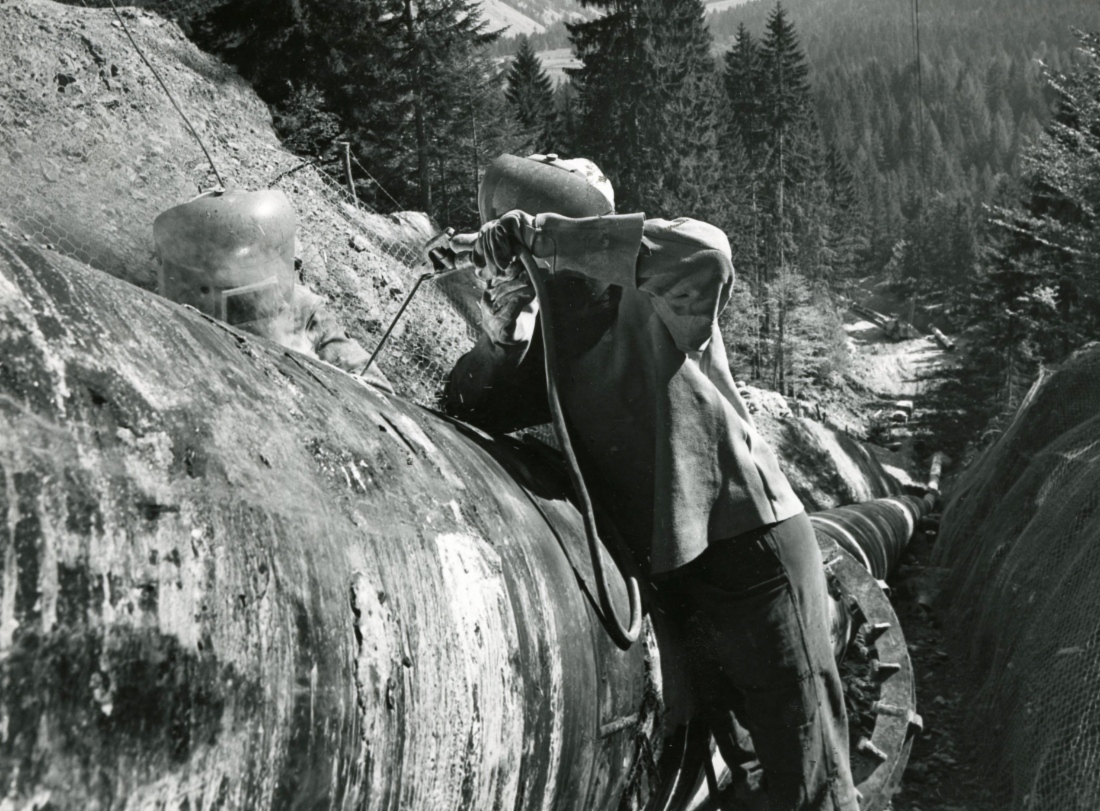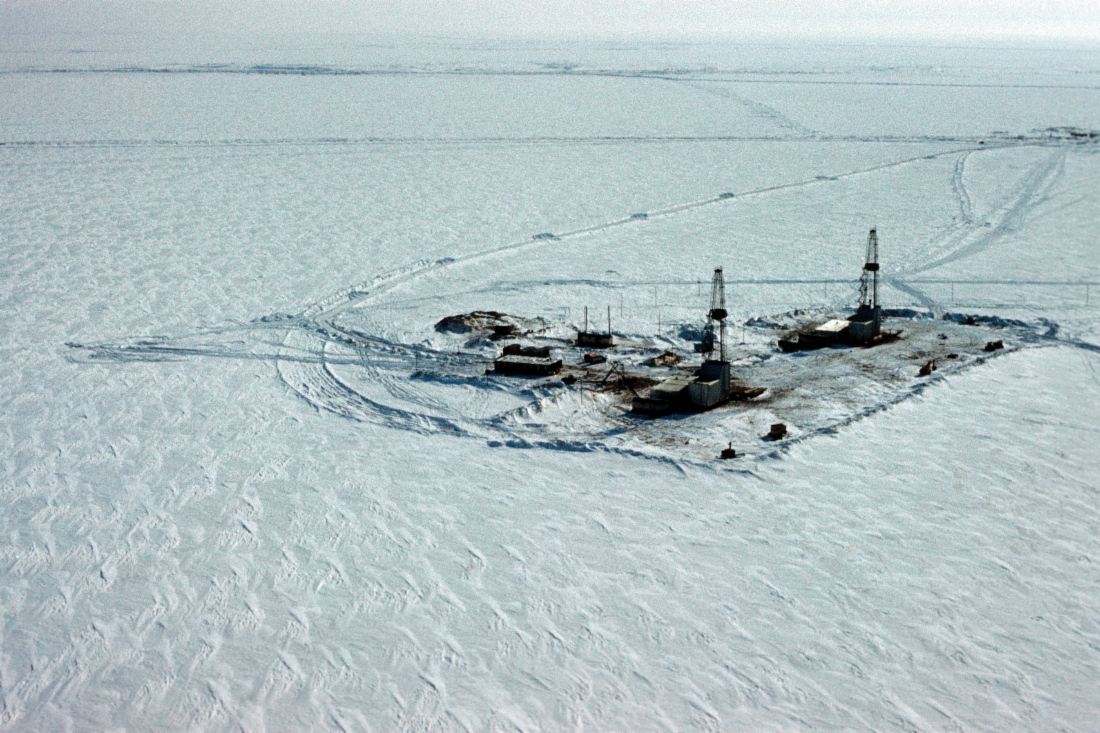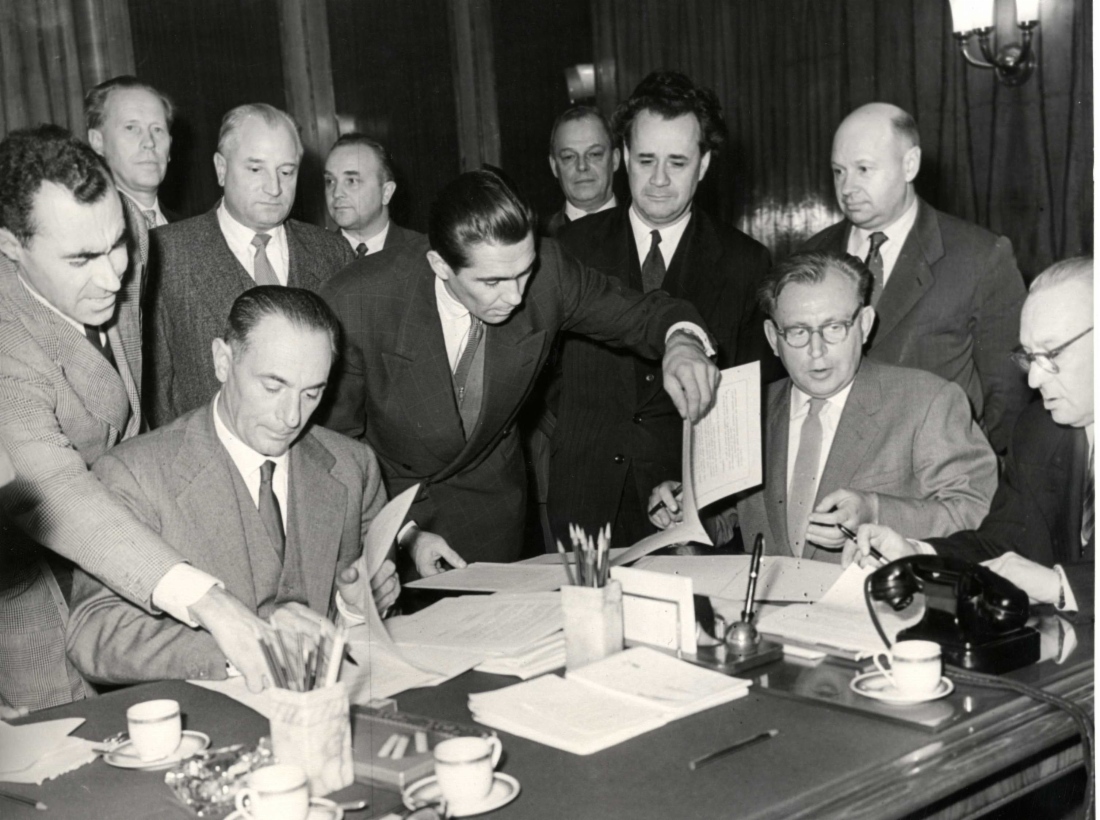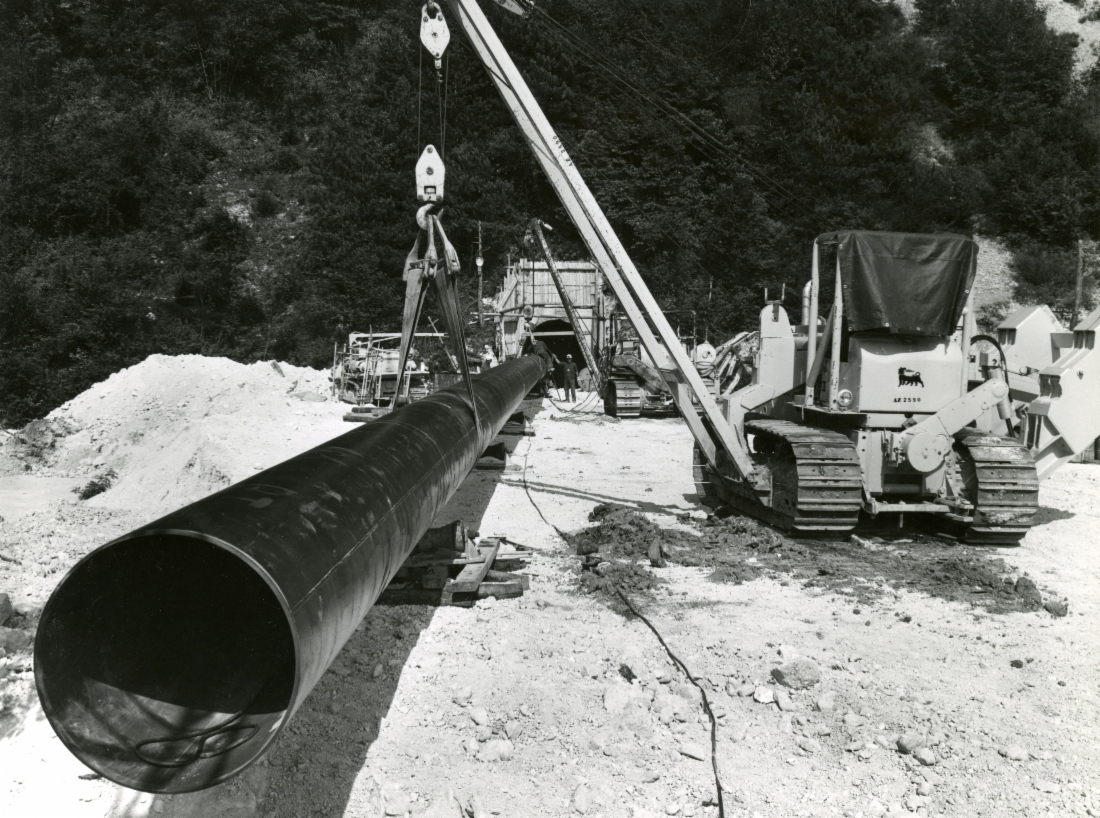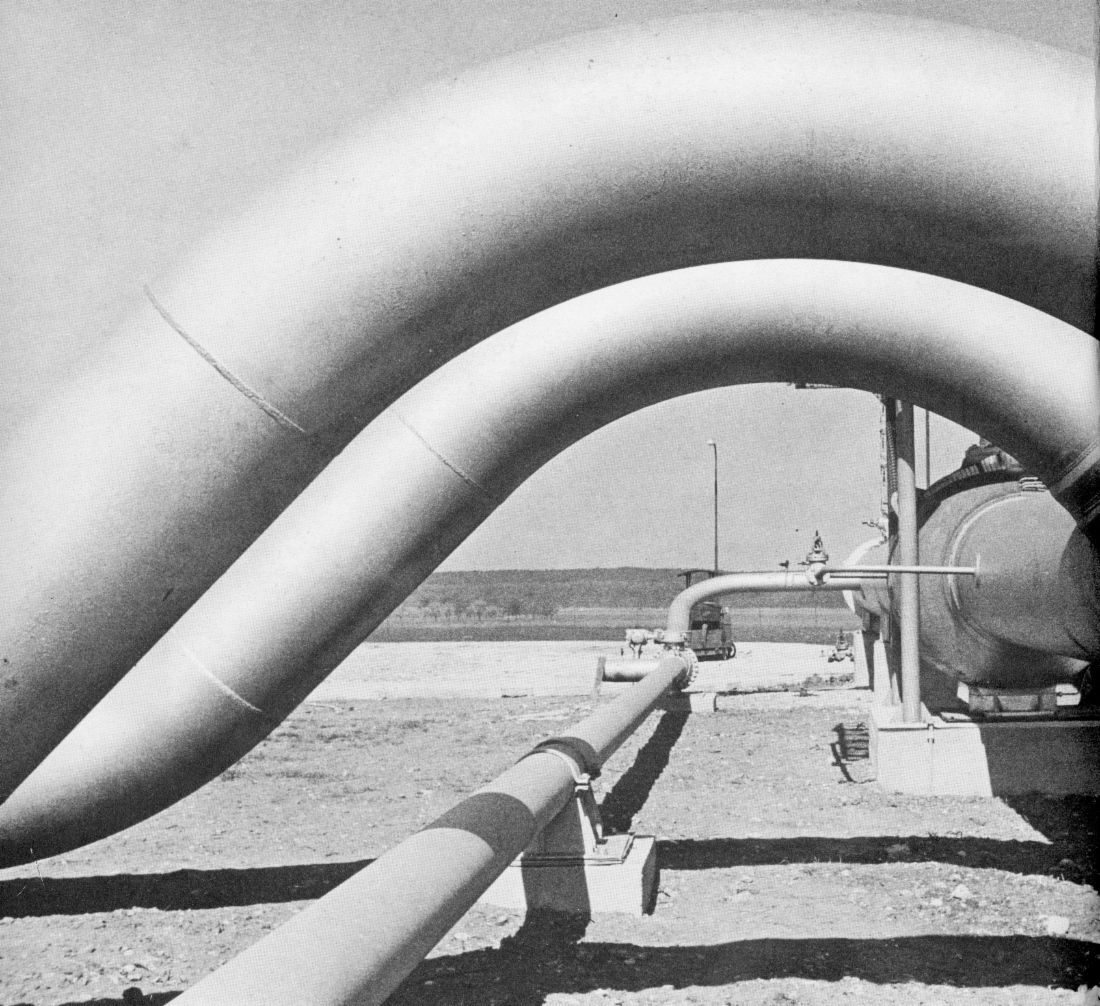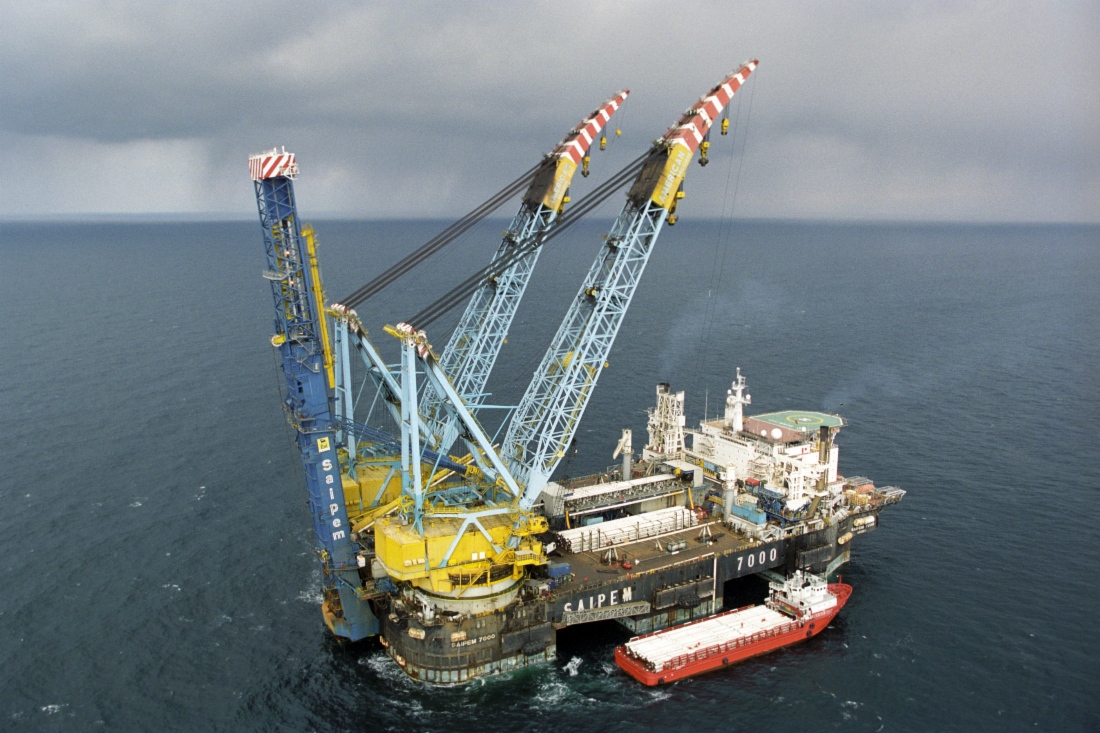40th anniversary of Russian gas supplies to Italy
 Overview
Overview Photos
Photos
Brochure
40 Years Together. History of Cooperation between Gazprom and Eni
December 10, 2009
Today the Russian Federation and Italy celebrate the anniversary of bilateral relations. It has been 40 years now since Eni and the USSR Ministry of Foreign Trade signed a contract for natural gas supply to the Apennines.
In the relations established between Rome and Moscow in the middle of the 20th century, energy companies have been playing a leading role by adjusting international business priorities in their home countries. In a somewhat complex global environment of the Cold War, when the Soviet Union and Italy were members of the military and political blocks with different ideology and military doctrines, the trade exchange, especially between the Eni Group and its counterparts in the Soviet Union, was pursuing two goals: tying mutually beneficial inter-state relations in various fields and providing a mechanism for rapid growth of commodity exchange.
The energy ties between Italy and Russia date back to over 50 years. It is a long history of successful cooperation that lays the solid foundation for realizing the value of cooperation between Gazprom and Eni, as well as the facts that led to making a pioneer gas contract in 1969. Each project and every contract was another step on the way forward in the process of getting acquainted with each other and promoting joint efforts and collaboration, which led to becoming closer. This has made a contribution to a common cause and, in particular, establishing friendly ties and trust among people making it easier to solve problems and helping in successful completion of negotiations.
In the late 1950s, Moscow and Rome came closer to understanding that their economies complemented one another. The policy pursued by the partners from the USSR and Italy was beneficial to both economies since raw materials procurement and meeting of the Italian economy’s energy demand ensured sustainable earning of convertible currency for the budget of the former Soviet Union, consequently, promoting high-tech machinery and equipment imports from Italy.
Italy’s industry restructuring and the economic boom proved a lack of energy resources needed by the national economy. Therefore, the country was seeking for raw materials abroad and had to agree on the conditions inflicted by western cartels.
A considerable amount of oil and, subsequently, natural gas imported at competitive prices from the USSR met the top-priority interests of the Italian industry. The economic dialogue with the USSR helped Italian enterprises use the potential of a huge Soviet market enhancing the exports.
Led by Enrico Mattei, Eni has become the first company in the world to apply from the late 1950s an integrated petroleum processing technology. However, the Italian state-owned company was short of oil to implement its plans. The bulk of the oil being processed by the Eni Group was imported. It was in 1958 when Eni inked the first contract for delivery of a considerable amount of oil from the USSR. The contract provided that Eni would import 80 thousand tons of oil amounting to USD 360 thousand. In turn, Eni exported 5 thousand tons of synthetic rubber worth in excess of USD 1 million. Initially, 3 thousand tons were to be supplied within the first quarter of 1959 and the remaining 7 thousand tons – later on that year. As years passed by, this bargain proved that Eni was a pioneer since the company had foreseen the huge prospects for cooperation between the two countries as early as in the 1950s.
Meanwhile, trade cooperation with Italy and raw materials export provided the Soviet Union with quality machinery and high-tech equipment required for the economy restructuring that had commenced in 1956.
In January 1959 an ambitious 7-year national development plan was approved providing that the USSR was to become a leader of the world economy by 1965. It was evident that domestic technologies only were insufficient to achieve the goals set and cooperation with Eni could shorten the technological gap.
Reference Point: 1960 Agreement between Eni and Soyuznefteexport
Cooperation of Soviet energy enterprises and Eni commenced on the basis of common economic interests and robust human relations of trade representatives and diplomats from both countries. This was the very basis for an important contract for crude oil supply from the USSR to Italy signed on October 12, 1960. The agreement was likely to become possible due to the good reputation deserved by Eni’s president and the company’s employees in the USSR. The attitude of the Ministry of Foreign Trade to Eni was unambiguous. That is why, with due regard to Eni’s credibility in the USSR, Soyuznefteexport added a provision, which was very beneficial for Eni, impeding the Soviet oil company from oil sales to other purchasers in Italy from 1961 to 1966.
The contract made between Eni and the Soviet oil company in 1960 became a shocking piece of news, despite the fact the issue was included in the negotiation process launched a few years earlier. Within bilateral cooperation, it was a significant contract both in terms of value and scope. The contract opened up the way to the Apennines for Soviet oil. Under the contract, the Soviet Union had to export 12 million tons of crude oil to Italy within four years in exchange for 240 thousand tons of large-diameter pipes and equipment for oil pipelines, as well as 50 thousand tons of synthetic rubber.
This trade contract became the largest one in the history of economic relations between the two countries. The bargain broke the stereotype that Moscow could not be a reliable economic partner to deal with on a mutually beneficial basis, particularly in such a “risky” sector as the oil industry.
The contract inked between Eni and Soyuznefteexport gave an impetus to mutually-beneficial development of Soviet-Italian bilateral relations and became the precursor of negotiations regarding the conclusion of a new long-term contract for delivery of 28 million tons of crude oil until 1971 in exchange for the goods and services to be provided by the Eni Group. Successful cooperation of Eni and Soviet foreign trade companies helped find new cooperation fields.
Next Reference Point: 1969 Contract for Natural Gas Supply
From 1960 through to 1970 the gas industry was rapidly developing in the USSR and a branched network of gas trunklines was under construction. A decision to create more advanced and effective infrastructure was made in October 1961. It would be impossible to meet the objective using the Soviet technologies only. Improving the relations with Western business structures became a must. Due to a high level of advancement in industrial production, Italy was the country advantageous to broaden cooperation with. Having strengthened its cooperation with Soviet partners, Eni was among the first companies approached to by the USSR government.
The foreign trade turnover between the USSR and Italy from 1963 to 1964 was maintained on a permanent level. This was stipulated by the transition period policy pursued by both countries and allowing for no ambitious steps both in the foreign policy and economy.
In this very period, left-to-center political forces consolidated their positions in Italy, and the era of Nikita Khrushchev’s rule was nearly over.
In 1965 bilateral relations of the USSR and Italy were on a rise, cooperation of Eni and Soviet companies intensified. Special attention was paid to abundant natural gas reserves held by the Soviet Union. In these years the Snam company, being in an urgent need for ensuring safety of supplies and more acceptable prices for energy resources had to diversify its major energy sources. The company made a decision to import natural gas from the Soviet Union despite the major technical and legal challenges related to crossing the borders of other states. It was evident that domestic production was not enough to satisfy the growing market demanding for more and more energy. However, natural gas supplies from the Soviet Union to Italy required a pipeline to be constructed. The matter was under consideration for a number of years until 1965. Due to several reasons related to the positions of the governments of Italy and the USSR, the negotiations didn’t yield a rapid result.
The ever first top-level negotiations on constructing a gas pipeline were held in June 1965 in Moscow in the presence of a newly-appointed president of the Eni concern Eugenio Cefis and heads of the USSR Ministry of Foreign Trade. Soviet gas procurement could broaden and strengthen good relations between Rome and Moscow in the energy sector. Cefis assured the Soviet leadership that Eni could supply the materials and equipment required for construction operations and the relevant expenditures could be covered through Soviet gas supplies. In fact, payment for gas with equipment and pipelines was very profitable for the USSR since the request made by the USSR Ministry of Fuel Industry for a certain amount of pipelines (5,900 kilometers) and compressor stations was aimed at executing other domestic projects.
The issue of the gas pipeline construction was postponed and remained without any substantial change for another year; the negotiations were resumed after Andrey Gromyko, Minister of Foreign Affairs of the USSR visited Italy in May 1966. Eni’s project met numerous technical challenges related to state-provided financial support and the fact that the Italian government in an apprehension of the international reaction to the gas pipeline construction was slowing down the project operations.
Initially, the Soviet Union suggested that the gas pipeline should run through Hungary and Yugoslavia. Later on, in order to tackle new challenges a decision was made to lay the gas pipeline route across Czechoslovakia and Austria. The total length of the gas pipeline had not been defined yet, however, the Soviet Union had to become the title holder for the pipeline section located within the country’s territory, the remaining part of it was to be owned by the respective countries. To ensure speedy completion of the negotiations, Nikolay Osipov, Deputy Minister of Foreign Trade of the USSR became in charge of it. One of the main obstacles for Italy was the issue of state loans. The delegations were working on the agreement throughout the year of 1966.
The Eni management was actively advocating the agreement before the Italian government due to a convincing reason: in 1965 natural gas production and consumption in Italy grew up to 7.7 billion cubic meters. Domestic production was expected to be not enough to meet the growing demand in the years to come. Italy could make the abundant gas resources of the USSR an energy source on the most advantageous conditions unprecedented in the world.
In early 1967 Moscow was exerting an increasing pressure on the Italian government in order to find a way out of the dead end the negotiations had come to before long. Nikita Ryzhov, the USSR Ambassador to Italy repeatedly insisted in the Italian Ministry of Foreign Affairs that it was necessary to make an agreement as soon as possible, or otherwise the Soviet Union would consider other proposals.
The issue was settled rapidly: on April 15, 1967 Italian newspapers reported that the national government ultimately approved the agreement between Eni and the Soviet Union after an interdepartmental meeting chaired by Aldo Moro, Prime Minister of Italy with participation of a number of Ministers and Guido Carli, Head of the Bank of Italy.
The approval of the deal by the Italian government marked the end of the first phase, but not the negotiations completion. During the following three years negotiations were underway in Moscow in order to study some financial and commercial aspects of the deal and deliberate on them.
The gas pipeline deal was closed in late 1969. On December 10, Nikolay Osipov, Deputy Minister of Foreign Trade of the USSR and Eugenio Cefis, President of Eni inked the agreement in Rome, which both countries welcomed with satisfaction. The agreement was made for 20 years and stipulated natural gas supply in the amount of 6 billion cubic meters per annum. The desired level was to be gradually achieved after the initial period. The agreement provided for the USSR to deliver the total of over 100 billion cubic meters of natural gas to Italy. The supplies startup was to commence in three years after the agreement signing, however, the actual delivery of the first gas occurred on May 1, 1974. The Soviet Union, in turn, was granted a loan of USD 200 million for the procurement of pipelines and equipment for the gas industry from Italian companies.
The pipeline for Soviet gas deliveries to Italy featured quite impressive technical and design characteristics. The gas pipeline route was selected on the basis of extensive research held by Italian and Soviet specialists in the areas the pipeline was supposed to run through, with due regard to respective geological peculiarities. The agreement stipulated for gas supplies to the Czech-Austrian border, therefore, a joint venture was set up with OMV, Austria’s leading gas company. The joint venture was to carry out construction and management of the Austrian 380-kilometer-long gas pipeline section.
Natural gas purchase from the USSR marked the second important phase in the history of Italian-Russian relations in the energy sector leading to development of bilateral relations in the years to come in other sectors as well. This was the first agreement of the kind in the whole world and the first one with the Soviet Union in terms of value. The agreement helped implement Enrico Mattei’s idea that gas could become one of the major energy sources. Those years may be described as a gas boom when the global energy demand was rapidly growing and the lack of resources was becoming more evident.
On June 8, 1974 San Donato Milanese hosted the official opening of the gas pipeline in the presence of Mariano Rumor, Prime Minister of Italy, Sabit Orudzhev, the USSR Gas Industry Minister and Nikolay Osipov, Deputy Minister of Foreign Trade.
On this occasion Mariano Rumor delivered a ceremonial speech underlining the importance of the gas pipeline construction for Italy: “Today, if we think about the irreplaceable and decisive role the energy sector plays and will be playing in the development of relations between the countries, we may consider the gas pipeline as a symbol of specific and close cooperation on the operational level. […] The gas pipeline commissioning is directly related to Italian industrial equipment delivery to the USSR, it is a convincing symbol and contribution to strengthening of long-standing bilateral cooperation between Russian and Italy, it also makes a reasonable contribution to energy resources supply to Italy”.
In turn, Minister Sabit Orudzhev said: “Throughout the modern history of economic relations few agreements and contracts can be compared to the agreement for constructing the gas pipeline from the Soviet Union to Italy. […] There is no doubt the importance of this agreement is beyond bilateral relations between Italy and Russia. This is witnessed by the fact that many European countries were engaged in the project implementation”.
Time-Proved Cooperation in Gas Sector
The new agreement became not only a cornerstone of Italy’s energy policy, but also a part of the European political and economic system based on this pipeline and other pipelines both existing and those to be built, opened new prospects in addition to the “traditional” energy sources. Starting from 1974, billions of cubic meters of natural gas were supplied from Siberian fields to Italy. Stability of relations between Eni and the Soviet Union (and subsequently the Russian Federation) facilitated continuous gas supplies up to date. This allowed Eni to meet the constantly growing demand on the Italian market. The Russian economy was provided with the experience gained by the Eni Group member companies and the Italian industry, as well as to procure the required goods and services.
In order to meet the gas demand growth and the interest of the Russian partner in building up export gas supplies, other agreements were made in addition to the 1969 agreement: the second contract in 1975 to additionally supply 1 billion cubic meters of natural gas per annum, and the third contract in 1986 providing for a twofold increase in Russian gas supplies up to 8 billion cubic meters. The last contract was supplemented with a new agreement allowing to receive additional volumes of gas through the operations related to financing the supply of goods and services of mainly Italian origin, and aimed at partial upgrading of the equipment for gas exports from Russia to Western Europe.
The perestroika and collapse of the USSR predetermined fundamental changes in the political and economic system of the country. Like the bulk of state institutions, the USSR Gas Industry Ministry was restructured and transformed into a new company called Gazprom. The fourth extension of the contract between Gazprom and Eni occurred in 1996 and provided for additional gas supplies to Italy in the amount of 8.8 billion cubic meters until 2008. In 2000 Promgaz and Gazprom made a new 25-year contract for gas supply. The last agreement made in November 2006 stipulates extension of the contracts for gas supply by Gazprom to Eni up to 2035. Thus, Eni became the biggest customer of Gazprom. Supplying over 28 billion cubic meters of gas per annum, Russia satisfies about one-third of Italy’s gas demand. The distance between Rome and Moscow became shorter due to the gas pipeline, inter alia.
New prospects emerged: ranging from the Blue Stream gas pipeline aimed at Russian gas delivery to Turkey across the Black Sea and commissioned in late 2002, to construction of a new mega-pipeline – South Stream – to make Russia and Italy ever closer.
Another important phase in the relations between Gazprom and Eni was the signing of an enhanced Strategic Partnership Agreement in 2006 providing for implementation of joint projects in Russia, Italy and third parties across the value chain, from upstream to downstream, as well as for cooperation in the technology sector. As part of this Agreement, in April 2007 Eni, through the Enineftegaz consortium (Eni holds a 60 per cent stake and Enel – a 40 per cent stake in the consortium), which was subsequently renamed into Severenergia, acquired gas production assets at an auction.
Severenergia provided Gazprom with an option to acquire a 51 per cent stake in the company, which was exercised in 2009 pursuant to the agreements. In addition, at the auction Eni acquired a 20 per cent stake in Gazprom Neft, an oil production company and a member of the Gazprom Group; the option for acquisition of this share portfolio was exercised by Gazprom as well.
Today, new horizons are open for Gazprom and Eni to develop mutually beneficial cooperation on a solid foundation. The first stones of this foundation were laid back in 1958, since then joint efforts of the companies have been a success.


